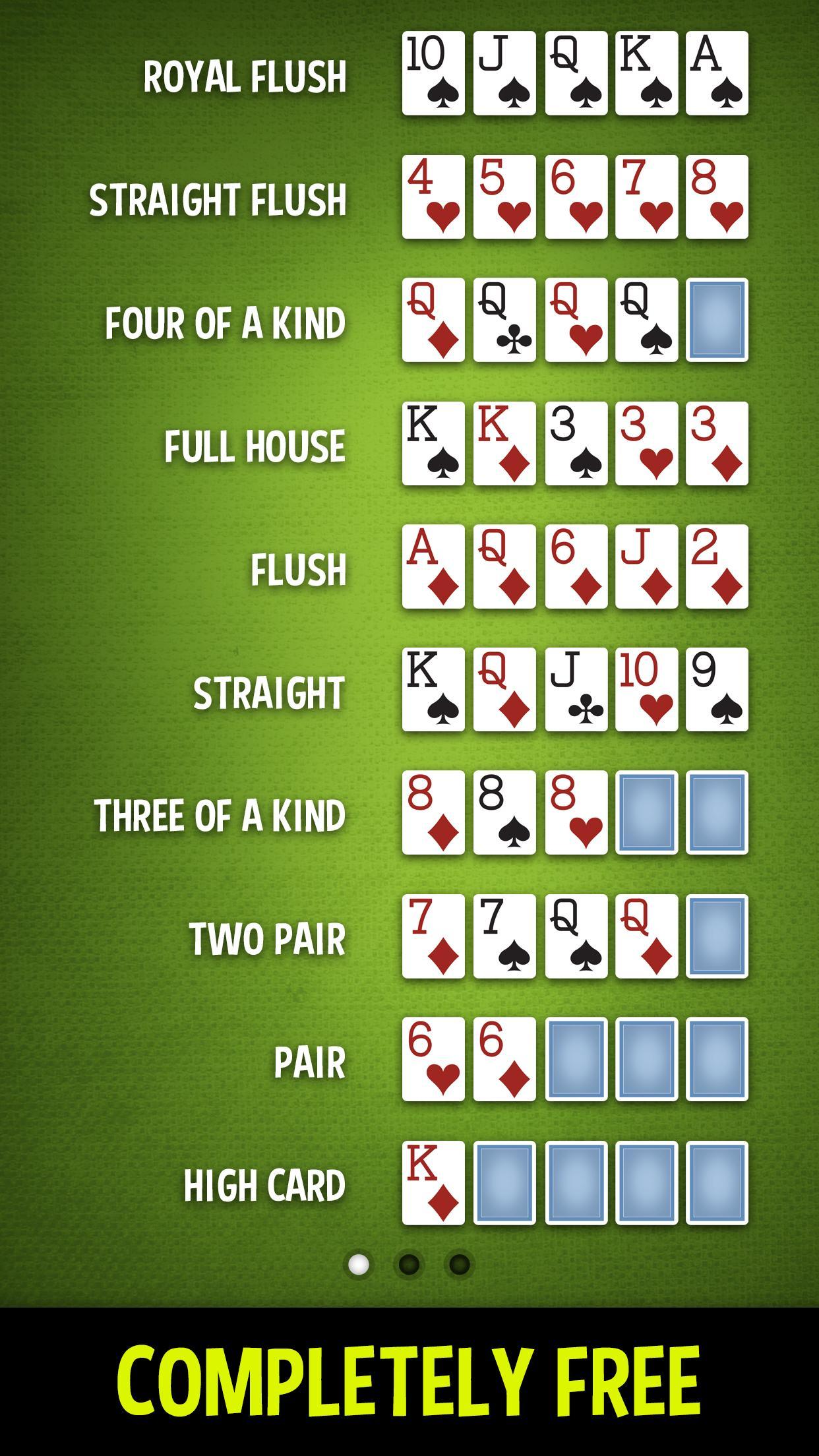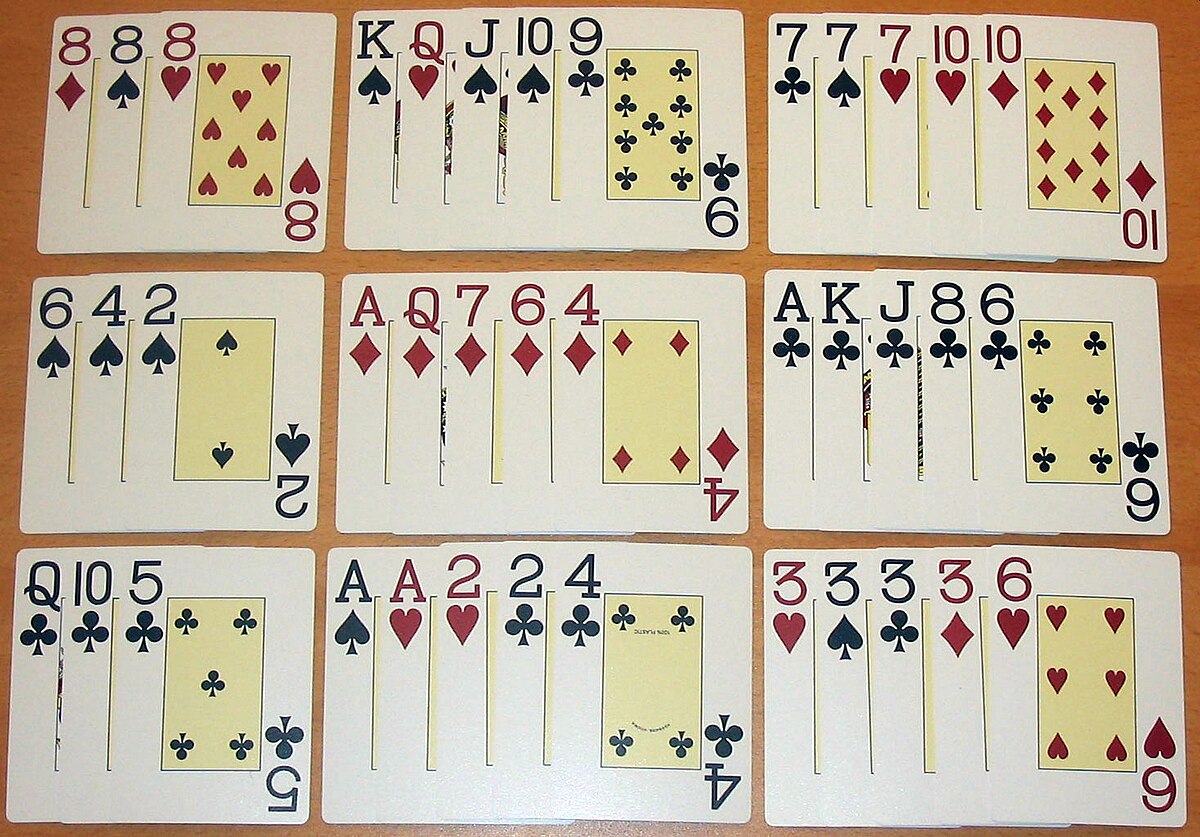2 players both have a full house. Player 1 has a full house with 2 kings & 3 queens. Player 2 has a full house with 2 Fours & 3 sixes. Player 1 would win because they have the higher cards. If there are 3 or less people in the tie, then there would be 1 tie breaker poker hand dealt and placement would be determined based on this outcome.
Mark Brader has provided the following tables of probabilities of the various five-card poker hands when five cards are dealt from a single 52-card deck, and also when using multiple decks.
- A full house, also known as a full boat or a boat (and originally called a full hand), is a hand that contains three cards of one rank and two cards of another rank, such as 3 ♣ 3 ♠ 3 ♦ 6 ♣ 6 ♥ (a 'full house, threes over sixes' or 'threes full of sixes' or 'threes full'). It ranks below four of a kind and above a flush.
- Although the full house is essentially a pair and a three of a kind combined into one hand, it’s a little more of a challenge, especially when wild cards are involved. Just as with coding solutions for the other poker hands, first make sure the cards in your hand are sorted by descending value.
- The only hand types recognised were, in descending order, four of a kind, full house, three of a kind, two pairs, one pair, no pair. No Unbeatable Hand. In standard poker a Royal Flush (A-K-Q-J-10 of one suit) cannot be beaten. Even if you introduce suit ranking, the Royal Flush in the highest suit is unbeatable.
- Full house, full boat, full hand, full A hand with three cards of one rank and two of a second rank. Also boat or tight. See list of poker hands. Full bet rule In some casinos, the rule that a player must wager the full amount required in order for their action to constitute a raise. Compare with half bet rule. See public cardroom rules and all.
The traditional hand types are described on the poker hand ranking page. These include one hand that belongs to two types at once - a straight flush is both a straight and a flush. With two or more decks, it is possible for other combinations to occur, such as a hand that has both a flush and a pair (such as 4-6-6-8-9 all of one suit). The left-hand tables include these composite hand types for multiple decks; in these tables 'plain' means a hand that is not a flush.
The hands are listed in descending order of probability, which could be used as the basis for their ranking order in multi-deck poker variations. It can be seen that as the number of decks increases, flushes become easier to make than straights, and sets of equal cards become more common.

Poker Hands Full House Rules
Here is the Perl program that produced the tables. Mark Brader has placed both the program and the tables in the public domain.
As discussed in the section about starting hands, the foundation of good no limit Texas Hold’em play is an accurate assessment of your hole cards and an idea of how to proceed with what you have been dealt.
Poker Hands Full House Rules Printable
It is crucial to grasp the value of hands pre-flop, taking into account your cards, your table position and the action of the opponents also in the pot. Then you need to act accordingly.
After the flop is dealt you need to repeat the considerations above and add one very important other factor: has the flop increased or decreased the value of your hand? You now have five cards with which to make an assessment of your hand (your hole cards and three community cards) and you need to figure out again how to progress.
But remember the flop may also have helped an opponent, so you also need to consider the number of other players involved, as well as the texture of the flop, before determining how you want to play from here.

This section of the course comprises three lessons, which all combine to determine the correct play after the flop. We will look at determining the strength of your hand (below), then at assessing the texture of the flop, and then how to proceed when all is taken into consideration.